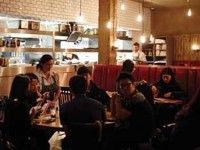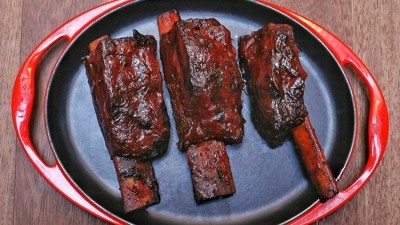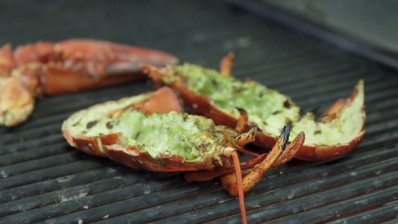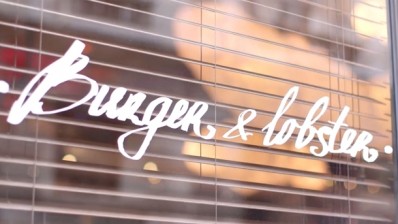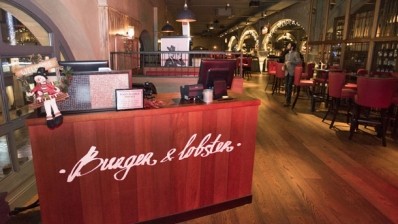Business Profile: Goodman Restaurants
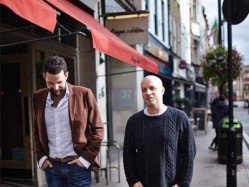
You certainly can’t accuse Goodman Restaurants, owner of three high-end eponymous steakhouses and four – soon to be five – Burger & Lobsters, of thinking small.
The Russian-owned turf, and more lately surf, restaurant group, which operates 10 steakhouses in Moscow, has defied the odds – and the pessimists – since it crossed the Baltic Sea and landed on these shores in 2008. First it opened a high-end Mayfair steakhouse just as Lehman Brothers sparked a global economic crisis, then it launched a meat and crustacean format so tight it made Nando’s menu look like an all-day brasserie offer.
Five years on and with a clutch of sites under both brands, Goodman has blazed a trail many would have thought impossible at the time. What’s more, it’s about to do it again.
By the start of 2014 the group will again dip its toe into uncharted waters, this time with an ultra-premium offer the likes of which haven’t been seen in the capital. In addition, it plans to open a more informal ‘lobster roll’ format that will move the group into takeaway territory for the first time. And after that – well, your guess is as good as any.
A desire to be different
It’s an unconventional trajectory for a company that was fairly predictable in its operations at the outset. As a burgeoning group of steakhouses Goodman looked likely to follow in the footsteps of established brands such as Gaucho, albeit with a more American focus, and build a respectable empire across the capital and beyond.
With three sites launched in relatively quick succession, first in Maddox Street in Mayfair, followed by one in the City and another in Canary Wharf, Goodman was exciting Londoners’ palates if not their imaginations. And then, in late 2011, Burger & Lobster was launched – a restaurant with an offer that is almost summed up in the brand name – and since then things have taken an unforeseeable turn.
The basis of Goodman’s rather idiosyncratic approach can be traced to two sources. First, its Moscow-based founder and main shareholder Mikhail Zelman – known as Misha – has a rarefied outlook on restaurants that appears to know no bounds. Second, the group has deep pockets that enable it to fund ideas others might be unwilling to gamble on.
“We are a most unusual restaurant company,” admits George Bukhov, who heads up Goodman’s international business, including that in the UK. “London gives us a chance to implement some of the craziest ideas about food and some of the most brave concepts.”
Bukhov, along with director of operations David Strauss, and under the direction of Zelman, has a seemingly fearless approach to launching restaurants, as the group’s latest super-premium project attests. Provisionally called Steak & Crab – in keeping with its say-what-you-see brand mentality – the 120-cover, 5,500sq ft basement restaurant will be located on Chapel Place, just off London’s Oxford Circus. The restaurant will serve huge, tank-fresh Alaskan king crab and large steaks on the bone, as well as some “really big” lobsters, and will feature a wine list of top-end bins. Average spend will be north of £100 a head, which Bukhov says will put it out of the reach of even many Goodman regulars (average spend is £50 to £60).
It’s a high figure considering customers don’t even get to choose their starters, sides or dessert.
“There will be a choice between steak or crab but no menu to speak of. There will be a selection of starters, sides and desserts for the table, which will be included in the price. It looks crazy but the logic is very simple. It will be very expensive but absolutely great value for money,” says Bukhov.
The point of this prescriptive approach – as with Burger & Lobster – is to ring the changes, adds Strauss. “It’s a one-of-a-kind restaurant. Ninety per cent of new restaurant openings in the capital are exactly the same. Misha has no desire to do the same thing as everybody else.”
The makings of Burger & Lobster
This desire to do something different was the driving force behind Burger & Lobster, where a simplistic, ‘mono-product’ approach, as the company refers to it, and no-reservations policy broke the mould when it launched in Mayfair.
For £20, diners choose between a burger, a lobster or a lobster roll, all of which are served with fries and salad, and from a similarly tight wine list – it was originally going to serve only one red and one white. Far from being put off by the limited choice, consumers embraced the idea, with the wait time for a table routinely up to three hours long.
Burger & Lobster’s fifth site opens in Harvey Nichols this month and the brand was named Best New Scaleable Concept at Restaurant’s R200 Awards last November. At the time the award raised eyebrows among people who didn’t believe a place that held live lobsters could ever roll out in a meaningful way. But not only has the group silenced such critics, its ambitions for the brand’s future are higher than most anticipated.
“I’m not saying we will become Starbucks, it’s not what we want to do at this stage, but when Starbucks built their first 10 sites they did their research, which showed they could open 100. When they opened 100 they did more research and it showed they could open 1,000. When they opened 1,000 they stopped the research. Regarding Burger & Lobster, we’ll see,” says Bukhov. “There are quotas for lobster fishing and some restrictions, but our own research shows we don’t have to be worried about anything up to 100 restaurants.”
That might sound a ludicrous figure considering the business model is built on flying live lobsters from the US and holding them in tanks – still alive – until a customer orders one. But Bukhov and Strauss are unfazed. The group imports eight tonnes of live lobsters each week from suppliers in Maine, Nova Scotia and Massachusetts, and by the end of the year will have built a central storage unit near Heathrow to safeguard against natural disasters. “If there was another dust cloud the restaurant becomes Burger & Burger,” jokes Bukhov.
“It was a total experiment,” he adds, almost nonchalantly describing the thought process behind Burger & Lobster. “After it opened demand was big and we thought we could make it scaleable. We didn’t know anything about lobster but realised the best lobster is fresh, and fresh means alive, and alive means you have to keep it in a tank. For this volume you need direct supply – so we did it.”
Having established a product pipeline, and being able to deal with vast amounts of live seafood, the aim is to open a Burger & Lobster in every major UK city. “We believe the Burger & Lobster experience will be very attractive in all big cities. The average spend is £28 to £32, which in any city is affordable for many people.”
Before this, the group has even bolder expansion plans for the brand. Its next non-London site will be New York, and it has already been scouting Manhattan for six months, with Midtown the preferred location for a launch next year. It’s not quite taking coal to Newcastle, but Bukhov believes the group’s use of USDA beef and American caught lobsters will put it in good stead Stateside. “If it works in New York I don’t see why we can’t continue in the other major cities.”
Beyond that, Asia and the Middle East are also on the cards, with a handful of sites in each region a conservative estimate for what can be achieved.
“It’s such an international model and concept,” says Strauss. “Because it is so simple it can be rolled out in different countries.”
There are big ambitions for Goodman’s informal lobster roll format too, a concept born out of the success of the dish at Burger & Lobster. The first Lobster Roll Deli opens soon on Binney Street, again off Oxford Street, and will have a lower price-point thanks to its pared-back fit-out. The deli, which will have an American look and feel, won’t offer table service and will major on takeaway lobster rolls.
As with Burger & Lobster, if it proves a success the group is unlikely to drag its feet with expansion. “Lobster Roll Deli will be fairly easy to duplicate,” says Bukhov, with a glint in his eye.
An uncertain yet exciting future
With so many different concepts – and with more being considered – finding suitable sites is a major consideration. The group is in negotiations on a premises in Little Portland Street, Fitzrovia, slated for a sixth Burger & Lobster, although the pair joke this could change should Zelman decide to bring another idea to market quickly. With this in mind, does the group buy sites and decide what to do with them or has it got a clear vision for every location?
“We always have a clear concept and then look to find the perfect property. It’s a big mistake doing it the other way round,” says Bukhov, who points to the group’s acquisition of Bistro Du Vin’s two outlets as a cautionary tale. As well as a bustling site in Dean Street, Soho, the deal involved premises on St John Street, Clerkenwell, that proved challenging.
“We have spent more money than we wanted on it and operationally it is more difficult than other sites.” As such, the group now looks to buy single sites rather than small restaurant chains.
The relative simplicity of each operation helps with the number of concepts soon to be under theGoodman banner. Goodman’s steak expertise and sourcing of live crustacea will be an asset for Steak & Crab, for example. The restaurants’ tight menus are also easy to execute, says Strauss. “For Dean Street Burger & Lobster we hired 23 people off Gumtree and in five days of opening we were doing 800 covers a day.”
As someone who oversees the group’s day-to-day operations, Strauss will no doubt hope any new concepts dreamt up in Moscow will be just as simple, but there are no guarantees. “It’s a drop in the ocean for the number of ideas coming through, and some you couldn’t make up,” he says. “There’s no clear schedule but we’ll never stop having ideas.”
This ultimately means there will be no more new Goodman steakhouses, not just because thegroup has other things on its mind, but because Strauss believes there isn’t the appetite for any
more. And, if the truth be told, it’s probably a bit too prosaic for the Muscovites these days. As Strauss admits: “If the Bibendum building ever went up for sale our people would wander round there coming up with the craziest ideas ever.” The mind boggles.
